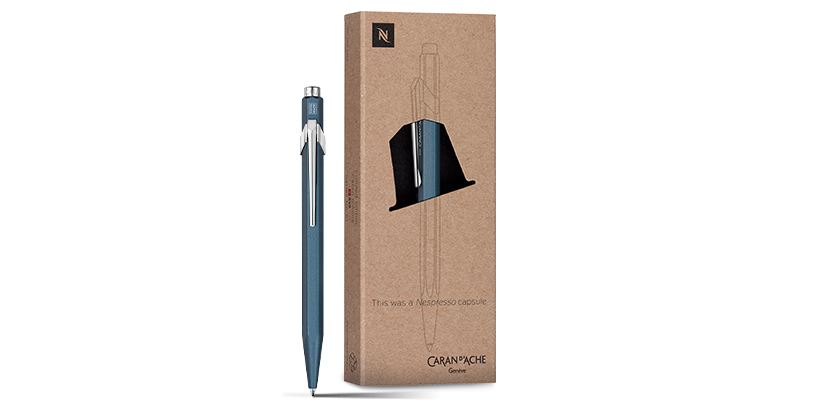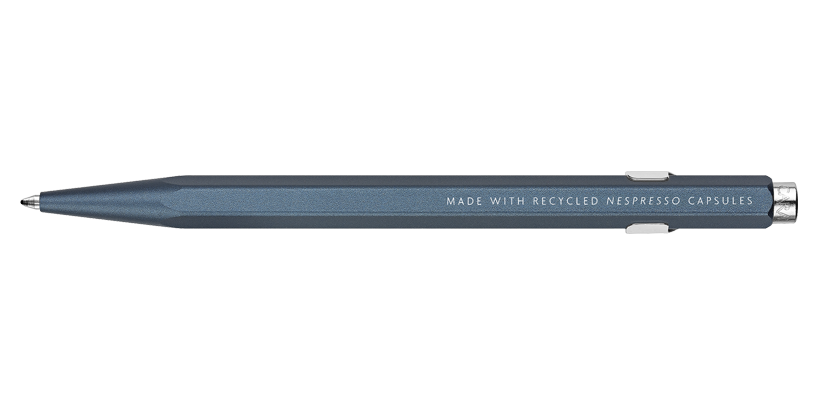Nespresso Case Study: Building trust through a sustainability campaign in 5 steps.
Unfortunately, too often I do observe that good (sustainable) intentions, don’t translate into a meaningful and well received communication. I worked for many big global brands and I witnessed this too often. The following good example is from Nespresso – but even at Nespresso, I could report from several campaigns that failed. And if analyzed why, one or more of the following 5 steps was badly done. In fact, if you don’t get the second one right, the rest will be heading the wrong direction anyhow.
I. Understand your situation, the facts & define the goal
Over years the recycling rate of Nespresso capsules remained at the same level. Any efforts in pushing the rate up did not succeed. In fact, Nespresso did a lot to make it as simple and effortless as possible for the consumer. To illustrate this, let’s focus on Switzerland, the most developed and penetrated Nespresso market in the world. Let’s have a look at a few innovations that were pioneered in Switzerland first:
1991 (5 years after the launch of Nespresso) – the first recycling system was put in place, allowing consumers to bring back their capsules to recycle the aluminum. Today, there are over 2700 places where you can bring back your capsules in Switzerland alone.
2012 – launch of the recycling at home service offered in partnership with the Swiss post. This service allows consumers to leave their capsules simply in the letter box so that the postman picks them up free of charge.
Reality is that today, it is easier to recycle aluminum capsules in Switzerland than to recycle glass bottles (you need to bring them to the recycling containers) or even card board or paper (outside your home, but there are only a few dates of the month when this is possible). Yet, the recycling rates are far below on capsules compared to paper and card board. That is surprising as normally we sense that metal has a higher perceived value than these renewable other materials. Yet – the reality is – more than half of the capsules are thrown away. But why are people not recycling, even so it can be done almost effortless?
II. Find the core underlying consumer insight
So, what else can be done to bring rates up? Make it even easier? Introduce financial incentives to reward consumers? There are many possibilities. So where to start?
We started to listen to consumers with the attempt to learn and find a clue of why they do or don’t recycle. As were listening to them, we discovered first that consumers either believed in recycling generally or they did not. This has to do with culture and educational background to a large extend and it seemed clear that convincing them to start recycling capsules when they don’t bother about glass, plastic, paper etc. seemed an impossible mission. Fortunately, these people are a minority in Switzerland. So, we were digging deeper with those people who generally recycle, but don’t recycle the capsules. And here we found something elementary but somewhat surprising: consumer told us that they didn’t trust Nespresso to really recycle the returned capsules! There were different reasons for them to believe this: Nespresso is a big Nestlé globalized company, Nespresso is the only private organizer of a national recycling system (vs glass, paper, cardboard etc.), they heard about bad stories on clothes recycling and stories about Germany, where recyclable (green dots) items were thrown back with the trash afterwards and incinerated etc. Net – a lack of trust seemed to be the core issue and not the effort it takes. This was a game changing insight, as most efforts in the past were always directed to make recycling even more effortless. It seemed, it was easy enough – but even Nespresso was facing a lack of trust.
III. Find the big idea
If you have read my article about “building trust” you know what the ingredients are to build trust: make it personal, transparent and make your relations reciprocal. So, the idea to build trust needs to deliver also on the above criteria plus it needs to fit the equity of Nespresso. For once, we didn’t ask an agency to come up with ideas, it was born in my head: give the capsules a second life by creating other iconic Swiss design objects that are made from aluminum, like the famous Victorinox “Pioneer” pocket knife, the legendary Zena “Rex” potato peeler and the iconic stylish Caran d’Ache “849” ballpoint pen. Convinced from the idea, I wrote some letters to the CEO’s of Victorinox, Zena and Caran d’Ache to convince them from this idea. Almost instantly, the signaled their interest to sit down and work on the feasibility and concept.
If you don’t find a bid idea yourself, you will need to brief an agency to find an idea. Before you do this, make sure you review the verbatims of your consumer work first. Often, if you look carefully, you will find a few ideas there.
IV. Create a winning concept to brief an agency
Now it is time to translate the idea into a concept and test it (if you feel it is needed). You need the concept to create the basis for a great execution by your agencies. I practice writing concepts for all sorts of projects in my daily life (holidays, sabbatical etc). Once you have it, put it into a brief for an agency along with the other key briefing elements. Make sure that your agency briefing is concise and – well, really brief. It is more difficult to write a short briefing.
2nd Life Concept:
Consumer Insight: I don’t recycle because I don’t trust (Nespresso) that they actually do something with these capsules. Maybe they just throw them away after collecting.
Benefit: With an iconic object from the 2nd Life campaign you can own a proof point of your recycling efforts
RTB: The iconic 2nd Life campaign objects from trusted Swiss companies are all made (the aluminum parts of it) from 100% recycled aluminum Nespresso capsules
Personally, I find it also important, that you are clear about the story you want to create – ie that you are building the strategic pillars of your campaign first. Only if you know the direction, you can judge an agency’s creative work afterwards.
In the case of the second life campaign – the story to tell were pre-defined. The story we wanted to tell was:
There is second life for your capsules
You can get one of these proof points as a reward of your recycling efforts
The story is about sustainability – therefore packaging etc. needs to be made from recycled material, too.
Returning capsules is not only about the Alu it is also about the coffee ground, which provides over 100% of the energy to process the transformation from capsule to knife for example (circular economy).
We need to transparent and therefore tell consumers the recycling rate so that they can be part of the success.
All of this was put into the story and was part of the brief.
V. Roll it out and be prepared
One year after the initial idea and first letters to the CEO’s, we hold in our hands the first peelers and knives. We kept the pen for the 2nd year to keep some new news. As you roll out your campaign, make sure choose your date smartly. In today’s world cutting through the clutter is not easy and any GRP help you can get, is important. For the above, we choose the world recycling date in May. As media were eager to write something about this date, the announcement of our project was great food for news for them.
In all enthusiasm for the project, be prepared that there are always people that think differently. Especially on sustainability topics, bashing and getting accused to greenwash is frequent. Make sure you list all the possible questions, attacks etc.. In some cases, a stress test, crisis test meeting can make sense to get a fair overview of all potentials attacks and how you would react to them. In this respect, it is better to be over prepared than to be sorry afterwards. In the above example of the 2nd Life campaign, we had hardly any negatives. I believe this was the case, as the campaign was really building trust and ticked the boxes of transparency, personal and reciprocal communication - and because it was based on a true consumer insight.
For me personally, monitoring and analysis of the result shouldn’t be an extra point but integrated part of the roll out. Post analysis are great, but often useless. Permanent tracking and steering during launch however, are extremely helpful to fine tune your campaign. At the end of the campaign duration, you should be already doing it the way, how you would do it the next time if you would launch it a second time.




























